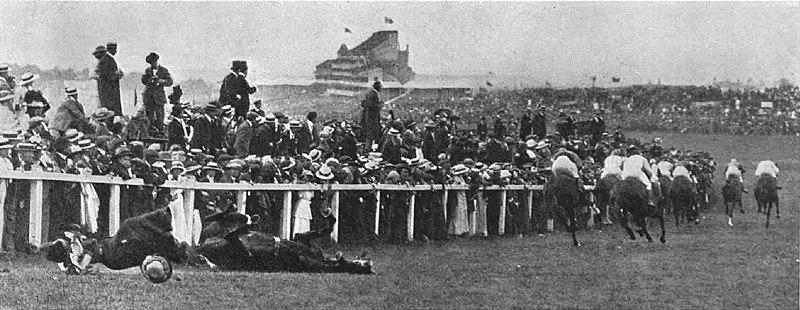Tasks: The Fight for Women's Right to Vote

Here are different statements related to the text you have just read. Work together with another student. Go through the statements and summarise the text.
What does the text say about:
expectations of women in Victorian society?
the rights that women achieved during this period, and the rights they did not enjoy?
the difference between women of different social classes?
the importance of John Stuart Mill and the Reform Act?
the events of 1897 and 1903?
the way the suffragettes tried to reach their goal?
the events of 1918 and 1928?
the international fight for universal suffrage?
barriers that many women today face in their attempt to vote?
You will sometimes hear the word 'suffragist' used, and other times 'suffragette'. Use the internet and find out where the words originate from and if there is a difference in meaning.
In the text, you will find three different expressions which are often used when describing the fight for women's vote: 'suffrage', 'franchise' and 'enfranchisement'. Is there a difference in meaning? And what is the grammatical difference between them?
- Queen Victoria said, 'Let women be what God intended, a helpmate for man, but with totally different duties and vocations.' What do you think Queen Victoria meant by this? Do you think she had herself in mind when she said this? Discuss why the Queen, a woman who held a lot of power, would say this.
During the campaign, the WSPU described its own bombing and arson attacks as terrorism, and this was echoed by the contemporary press. Would you define their actions as terrorism? What is your opinion about the different methods employed by the WSPU? Could their actions be justified?
Can you imagine involving yourself so passionately in a cause? What kind of cause might invoke such passion and self-sacrifice in people today?
The suffragette movement was far more violent and progressive than most people are aware of.
Watch one (or both) of the following documentaries about Emily Davison and the Pankhurst family (Emmeline, Christabel and Sylvia) and find out more about the movement.
Link to 'The Fatal Protest Of Emily Davison', link to film on YouTube

Work together in pairs.
Imagine that you are a time-traveller. You are going back in time to meet a suffragette and talk to her about her experiences.
Choose a name from the list in the box. Together, find out more about this person, what she did, and what her life was like. You should also do research into the suffragette movement, the methods they used, and how they were treated by society.
Work together on a list of questions and answers, and carry out the interview. Remember that the conversation should reflect that you are from two different time periods.
You can make a podcast, a film, or act out the interview in front of the class.
Emmeline Pankhurst
Christabel Pankhurst
Sylvia Pankhurst
Kitty Marion
Emily Davison
Lilian Lenton
Mary Leigh
Millicent Fawcett
Imagine that you are a journalist reporting from the 1913 Epsom Derby. Write the news report on the death of Emily Davison.
Write a diary entry of one of the imprisoned suffragettes, describing her experiences.
You are a suffragette in the early decades of the 20th century. Write an appeal in which you argue for equal rights for women.
- Write an essay in which you discuss whether the suffragettes were justified in using violence in their effort to gain the vote.
Write an essay about gender equality in different parts of the world today.
Guoskevaš sisdoallu
The right to vote is the cornerstone of a democracy. However, this is a right women have had to fight for.